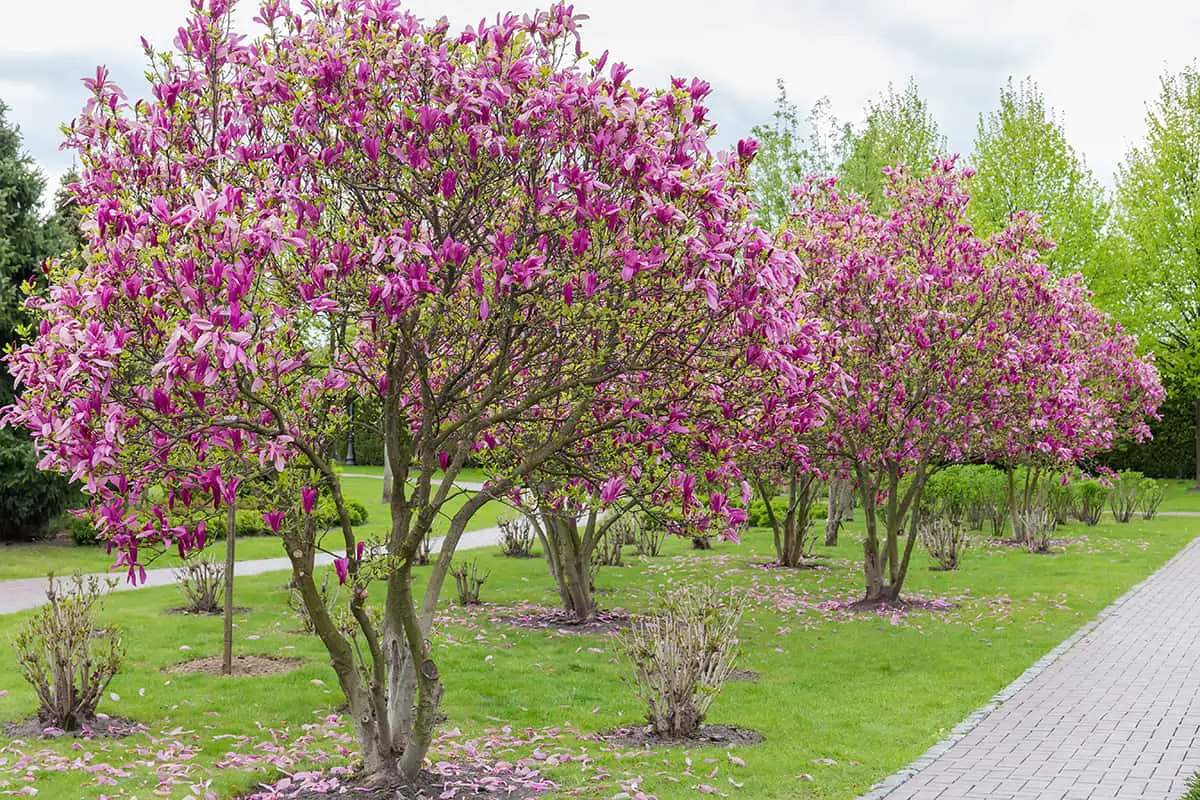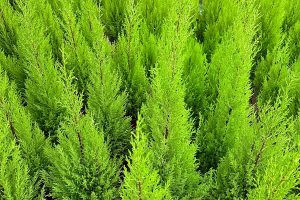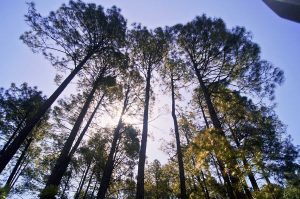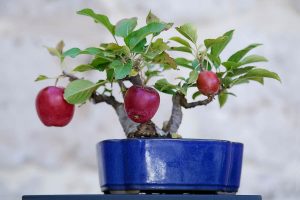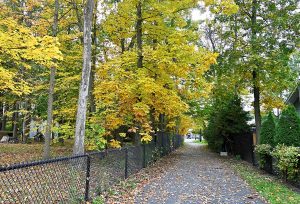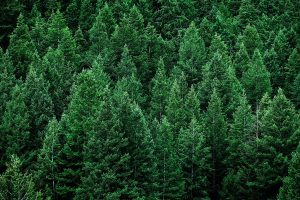In the heart of summer, there’s nothing quite like the relief provided by a canopy of shade in your backyard, coupled with the added privacy from prying eyes. Trees like the majestic Oak or the fast-growing Bamboo serve as nature’s solution, offering a serene and secluded outdoor sanctuary.
This article explores the best trees to plant for those seeking both shade and privacy, ensuring your garden becomes a tranquil escape from the outside world.
Table of Contents
- Arborvitae (Thuja Spp.)
- Leyland Cypress (X Cupressocyparis Leylandii)
- Bamboo (Phyllostachys Spp.)
- Magnolia (Magnolia Spp.)
- Holly (Ilex Spp.)
- Eastern Red Cedar (Juniperus Virginiana)
- Norway Spruce (Picea Abies)
- Green Giant Arborvitae (Thuja ‘Green Giant’)
- Weeping Willow (Salix Babylonica)
- American Beech (Fagus Grandifolia)
- Birch (Betula Spp.)
- Silver Maple (Acer Saccharinum)
- Oak (Quercus Spp.)
- Cherry Laurel (Prunus Laurocerasus)
- Japanese Maple (Acer Palmatum)
Arborvitae (Thuja Spp.)
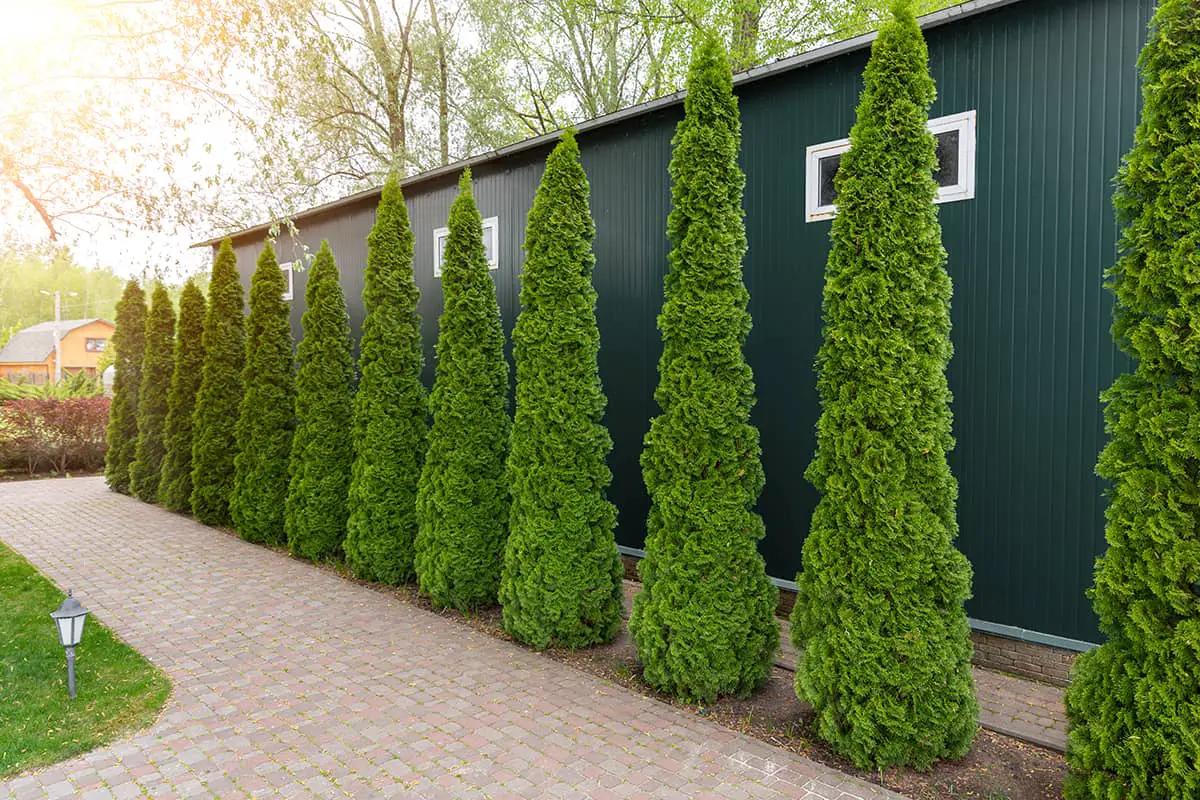
Arborvitae, or Thuja spp., are an excellent choice for shade and privacy. These evergreen trees, native to North America, can grow in a variety of soil conditions. They are known for their low-maintenance nature, making them suitable for any garden or landscape.
When selecting your Arborvitae, consider the Sunshine variety Thuja plicata ‘Sunshine’. This tree showcases golden foliage during the summer months and can grow up to 50 feet tall and 25 feet wide. Its needles are arranged in long-pointed scale-like new leaves, providing excellent coverage against wind or unwanted line of sight.
Arborvitae trees grow well in both full sun and partial shade. However, keep in mind that in full shade, the foliage might thin out dramatically. They are adaptable to different soil types, even tolerating alkaline and wet conditions. Arborvitae can also withstand some drought once they are well-established.
When planting Arborvitae for privacy, space them accordingly to take advantage of their eventual size and density. This ensures that they create a solid privacy screen as they mature. Keep an eye out for potential pests, such as bagworms, which can be controlled with timely spraying, as mentioned in the Purdue Arboretum Explorer.
Leyland Cypress (X Cupressocyparis Leylandii)
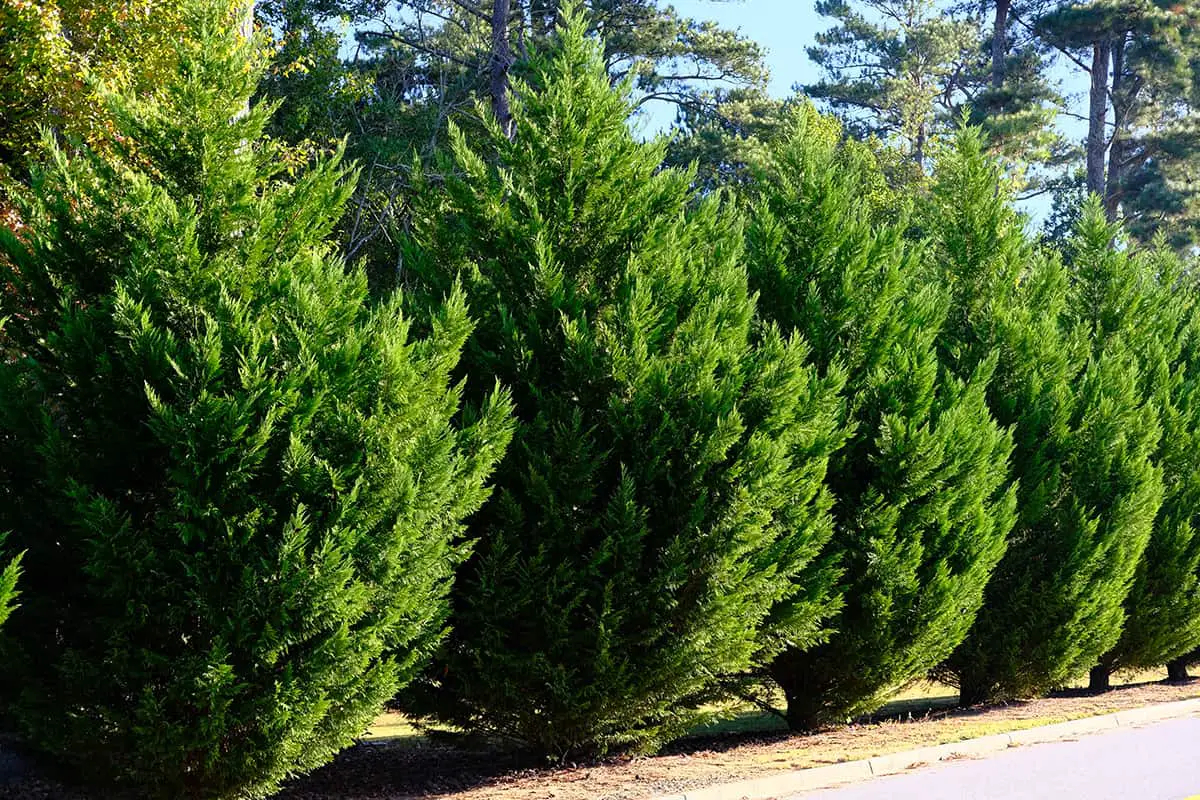
When you’re looking for a tree that provides both shade and privacy, the Leyland Cypress (X Cupressocyparis Leylandii) is an excellent choice. This large, handsome evergreen tree thrives in various conditions and can grow rapidly, making it a popular option for homeowners.
One key advantage of the Leyland Cypress is its adaptability. It prefers sun to part shade and well-drained fertile soil, but it can also tolerate acidic or alkaline soils and occasional poor drainage. This characteristic makes it ideal for various locations in your yard.
The tree’s rapid growth rate is another compelling feature. Leyland Cypress can grow three to four feet per year, even on poor soils, ultimately reaching a majestic height of 50 feet or more. This fast growth provides you with shade and privacy in a relatively short time.
Bamboo (Phyllostachys Spp.)
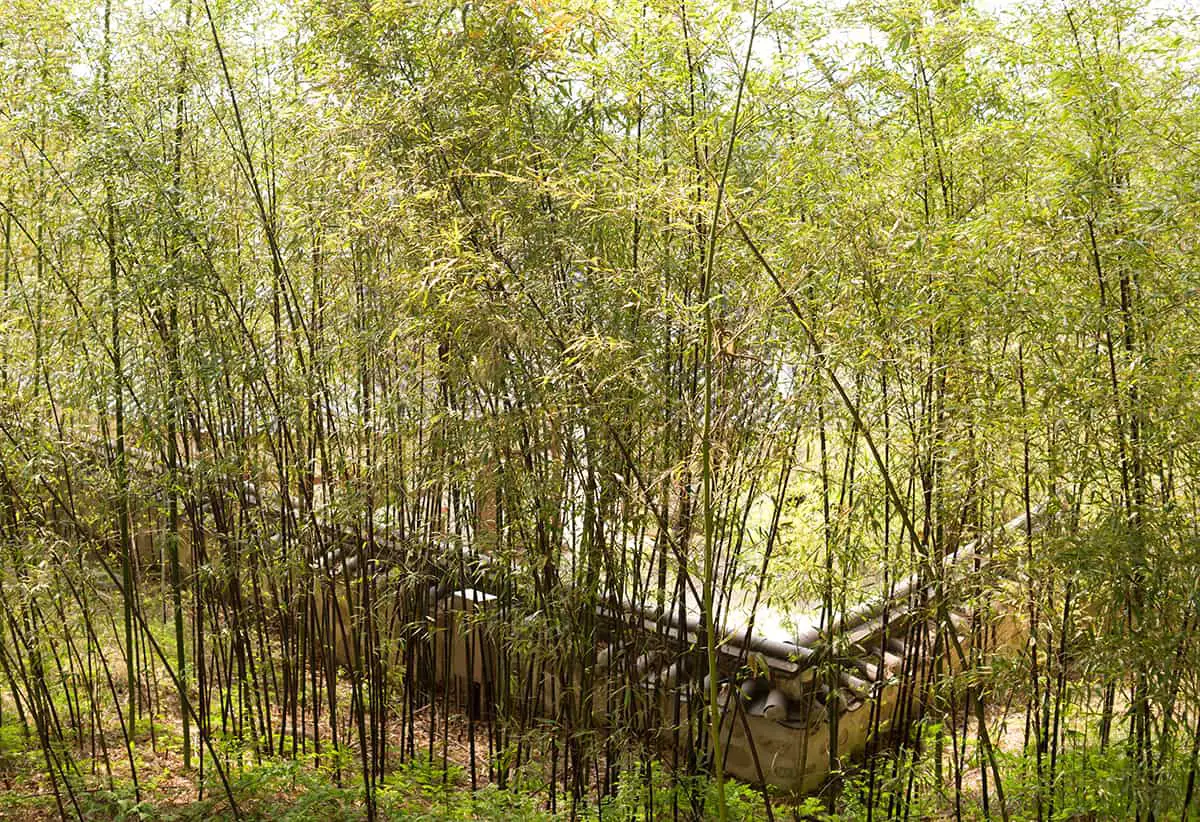
Bamboo can be another excellent choice for providing shade in your landscape. One popular species is Phyllostachys aurea, known as golden bamboo. This evergreen plant reaches heights between 10 and 30 feet, making it a versatile option for various garden sizes.
You should be aware that some bamboo species, like golden bamboo, are invasive. It spreads quickly through underground rhizomes, which can make it difficult to control. However, with proper management, you can enjoy its benefits without harming the environment. Strategies for containment include barriers or choosing a non-invasive species, such as clumping bamboo.
When selecting a bamboo variety, consider factors such as climate, soil type, and maintenance requirements. Dendrocalamus asper and Phyllostachys edulis are two popular species in the Southeast United States. These species can create a lush and secluded haven with their dense foliage.
Magnolia (Magnolia Spp.)
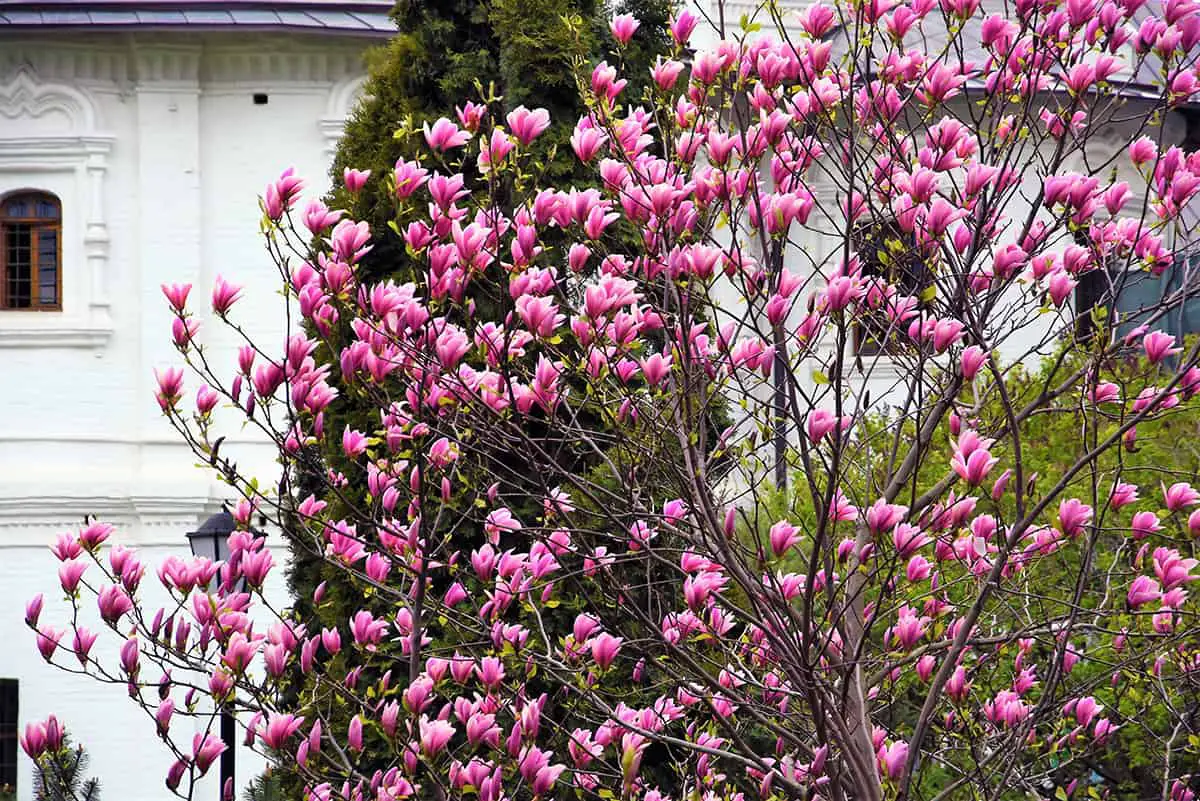
Magnolias are a popular choice for shade and privacy due to their beautiful appearance and versatility in the landscape. You can find many species and cultivars of magnolias that can suit your needs.
First, consider the size of the magnolia tree you want to grow. For smaller areas, consider the Betty magnolia, which reaches a height of 10 to 15 feet and a width of 8 to 12 feet. This variety features stunning deep purple-red flowers and copper-red leaves in the spring.
On the other hand, if you desire a larger tree to provide shade and privacy, the Southern magnolia is an optimal choice. It’s an evergreen tree that can reach 40 to 60 feet in height. However, if space is an issue, you can opt for the compact Teddybear® magnolia, also known as ‘Southern Charm,’ which has a more manageable size while still providing the same attractive features.
In general, magnolias prefer rich, porous, acidic soil with good drainage. Ensure you plant your magnolia in the right environment to allow it to thrive and create the beautiful shade and privacy you desire.
Holly (Ilex Spp.)
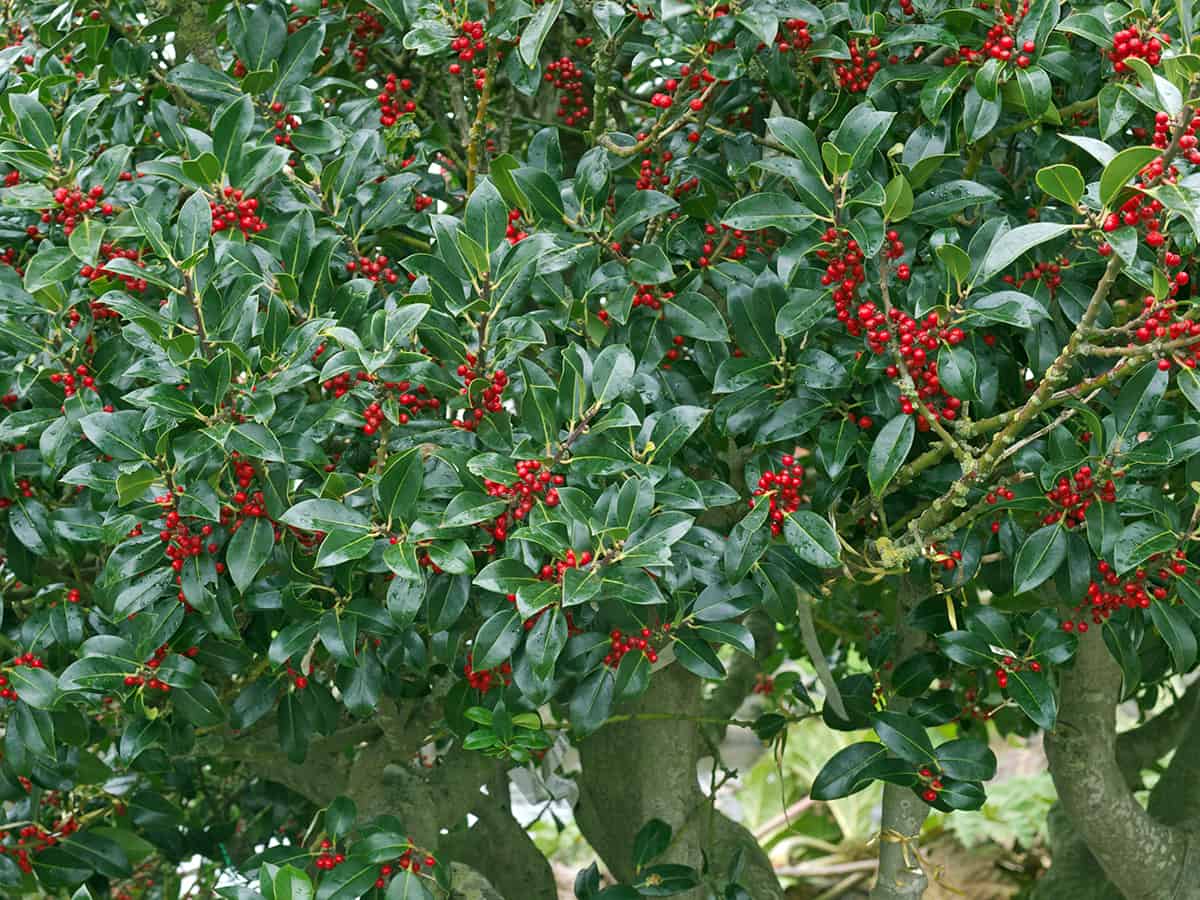
Holly trees, belonging to the Ilex genus, are great candidates for providing shade and privacy in your landscape. As a versatile group, hollies come in many sizes, ranging from small (18 inches) to large (over 50 feet). They’re available in evergreen or deciduous species, ensuring you can find the perfect option for your home.
When planting holly trees, remember they prefer moist, neutral, to acidic soils in full sun to partial shade. Not only do they tolerate a variety of soil textures, but some species can also withstand moderate salt exposure. If you have a particular need for privacy, consider species like Yaupon holly (Ilex vomitoria) or Inkberry holly (Ilex glabra) as they can be shaped for a hedge or maintain a more natural, informal look.
Although holly trees thrive in a range of lighting conditions, they can reveal a noticeable difference in their shape based on sunlight exposure. For instance, the Ilex ‘Savannah’ has a dense, loosely pyramidal shape when planted in a sunny spot, but it becomes more open when in partial shade.
Maintaining the health of your holly trees requires awareness of potential pests. Hollies can be affected by various issues, but proper care, like well-drained, slightly acidic soils and appropriate sunlight, ensures their resilience. By providing the right environment, you can enjoy the shade and privacy benefits of holly trees for years to come.
Eastern Red Cedar (Juniperus Virginiana)
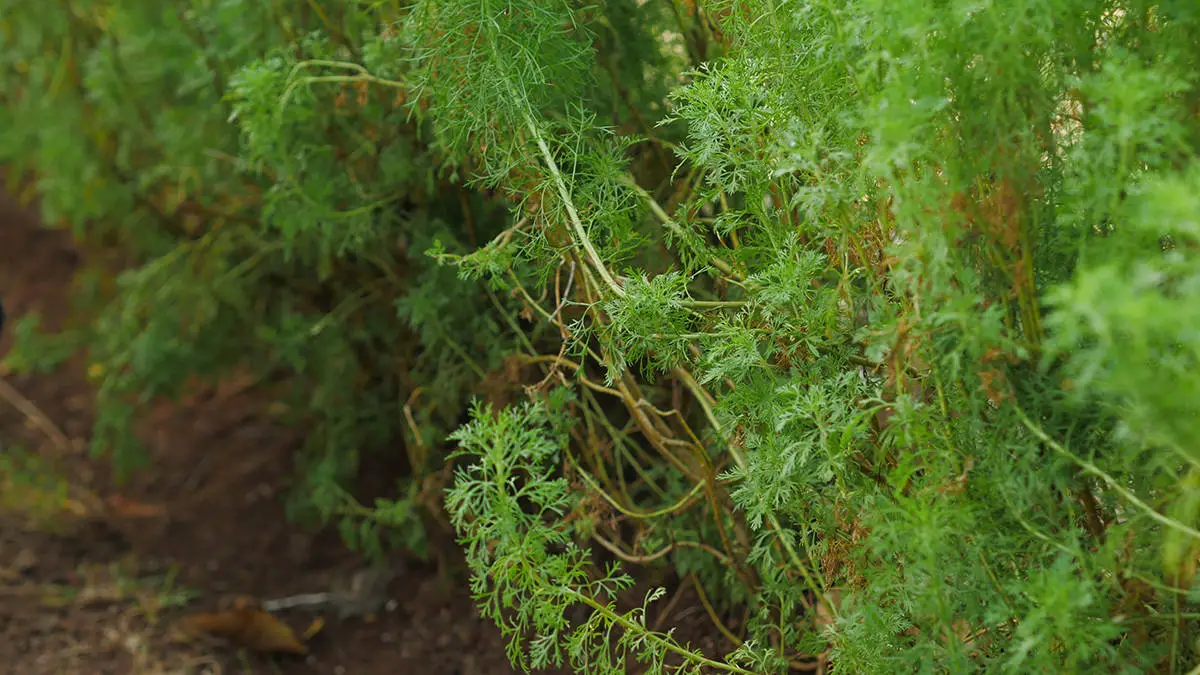
The Eastern Red Cedar is a native tree to the Eastern United States. It is known for its adaptability and tolerance to poor, gravelly soils. You will appreciate its benefits in providing shade and privacy.
This tree exhibits a straight trunk with a pyramidal to rounded crown shape. It can reach heights of 25 to 50 feet, perfect for creating privacy in your landscape. Additionally, the Eastern Red Cedar is hardy in zones 2 to 9, making it a versatile choice for different climates.
You will observe the Eastern Red Cedar’s blue-green, overlapping, scale-like leaves at maturity, providing dense foliage. This dense growth is favorable for roosting and nesting birds, adding another layer of privacy and natural beauty to your property.
To successfully grow the Eastern Red Cedar, plant it 12 to 24 feet apart in airy spaces. It typically reaches a mature width of 20 to 30 feet, so proper spacing ensures healthy growth. Moreover, it is highly salt-tolerant, which makes it suitable for coastal areas.
Norway Spruce (Picea Abies)
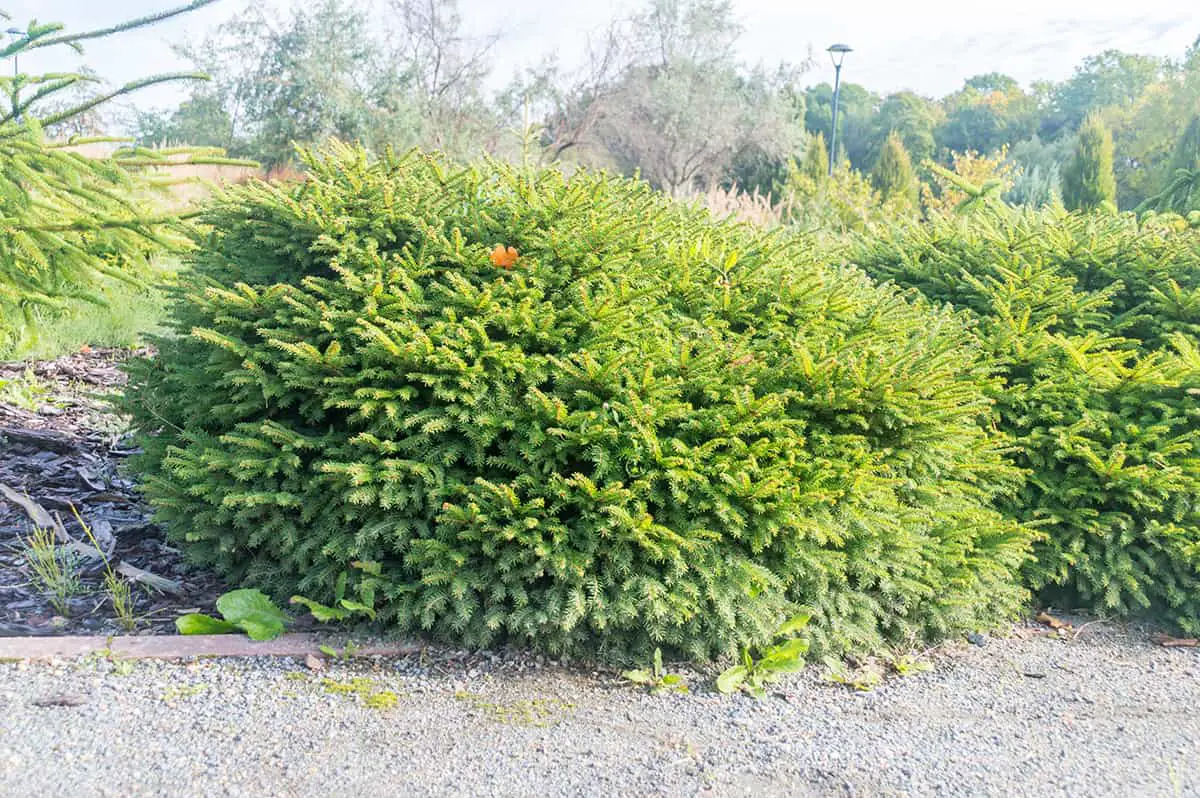
The Norway Spruce is a rapidly growing, needled evergreen tree native to Europe. With over 150 cultivars available, this tree is known for providing shade and privacy. You’ll appreciate its iconic appearance as it can grow up to 100 feet tall and 25 feet wide, making it an excellent choice for larger yards.
Planting Norway Spruce is ideal in locations with full sun to partial shade. Your tree will thrive in moist, well-drained, and slightly acidic soils. Remember to give it adequate room for growth, as it is not suitable for small yards.
When selecting a cultivar for your landscaping needs, be sure to research the height and form of the specific variety. Some, like the Weeping Norway Spruce, grow to a height of 12 to 15 feet and offer a weeping habit—an attractive specimen for mixed borders. Other options, such as the Dwarf Norway Spruce, boast a more rounded form, reaching heights of only 3 to 4 feet.
To ensure a thriving Norway Spruce, maintain moist and well-drained soil conditions. Established trees exhibit a certain degree of tolerance for drought and air pollution.
Green Giant Arborvitae (Thuja ‘Green Giant’)
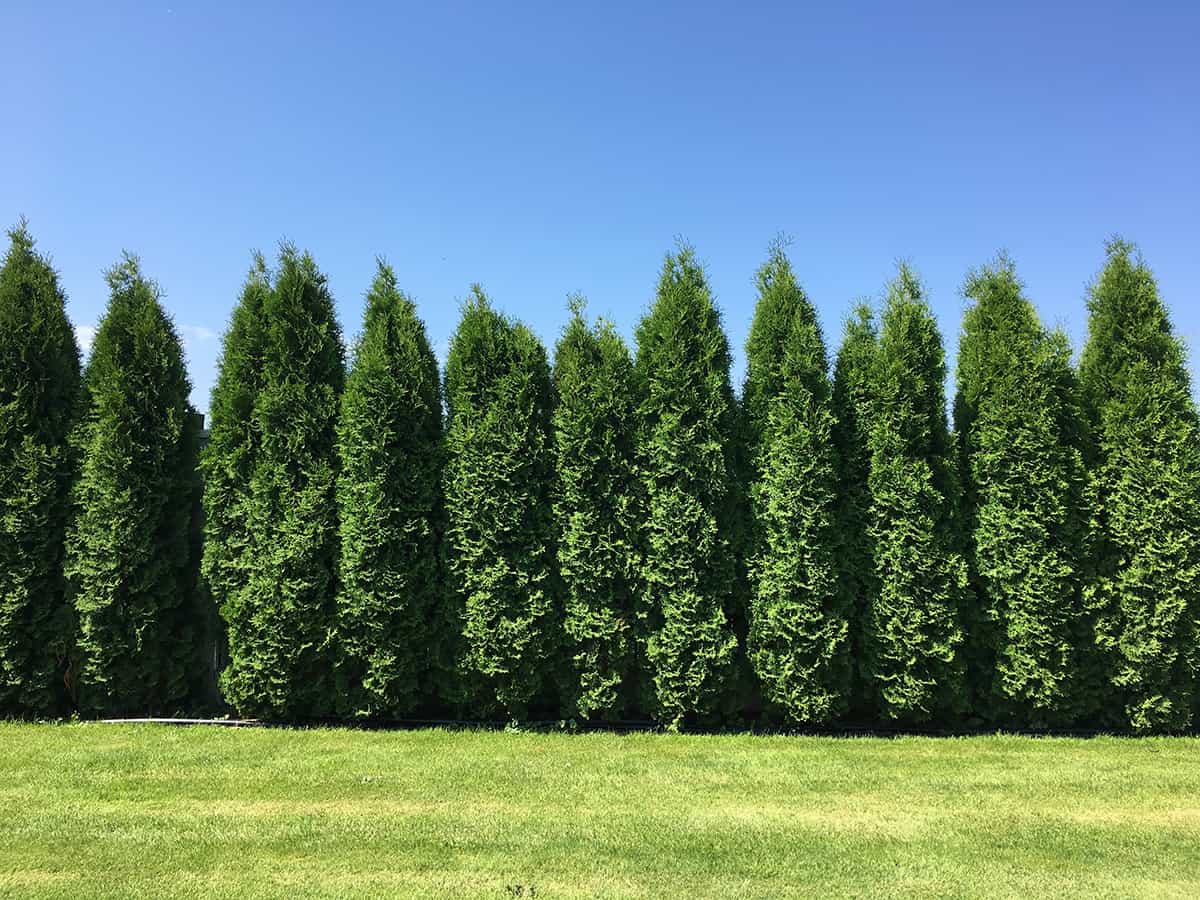
This evergreen, which grows rapidly, reaching heights of up to 50-60 feet and widths of 12-20 feet, is an excellent choice for shades for privacy. The dense, rich green foliage makes it a perfect natural screen for your yard. You’ll enjoy year-round privacy and a beautiful landscape feature.
The Green Giant Arborvitae is an adaptable tree, as it can tolerate a wide range of soil conditions and exposure to sunlight. For optimal growth, plant your tree in a moist, full-sun location with some light afternoon shade. Despite being subject to a few pests, such as bagworms, this tree remains healthy with timely spraying, according to the Purdue Arboretum Explorer.
When planting the Green Giant Arborvitae for privacy, space them approximately 5-6 feet apart to create a dense, living fence. Additionally, this tree is known to grow at an impressive rate of 3-5 feet per year, quickly providing you with the shade and privacy you seek. It’s essential to water them regularly during the first couple of years to establish a robust root system.
Weeping Willow (Salix Babylonica)
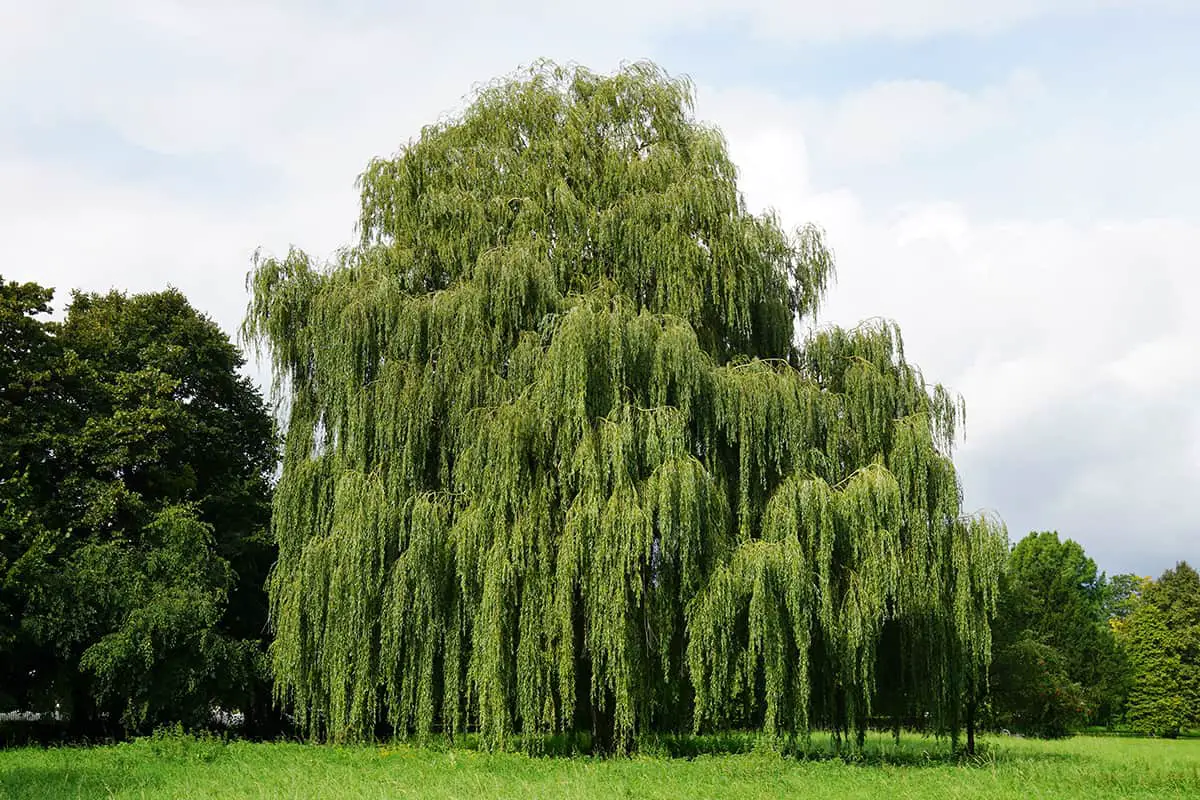
Weeping willows are a great choice for shade and privacy because of their fast growth rate. Known scientifically as Salix babylonica, this tree is native to China. Its long, drooping branches create a dense canopy that offers an excellent cover.
You will need to select a location for planting that has full sun and moist well-drained soil. The weeping willow prefers acidic soil conditions, but it can also tolerate various soil types, including clay, loam, and sand. Keep in mind that this tree can grow quite large, so ensure you provide enough space for it to flourish.
To propagate a weeping willow, use hardwood cuttings from the tree. Ideally, take cuttings during late autumn from new, fully hardened wood. Plant the cuttings and within a few years, your tree will be providing ample shade and privacy.
Please note that while weeping willows can enhance your property’s aesthetics, they have a short lifespan, usually up to 30 years. This is due to their brittle wood, which is prone to damage from strong winds and storms. Regular pruning and maintenance will improve the tree’s longevity and reduce the risk of wood breakage.
American Beech (Fagus Grandifolia)
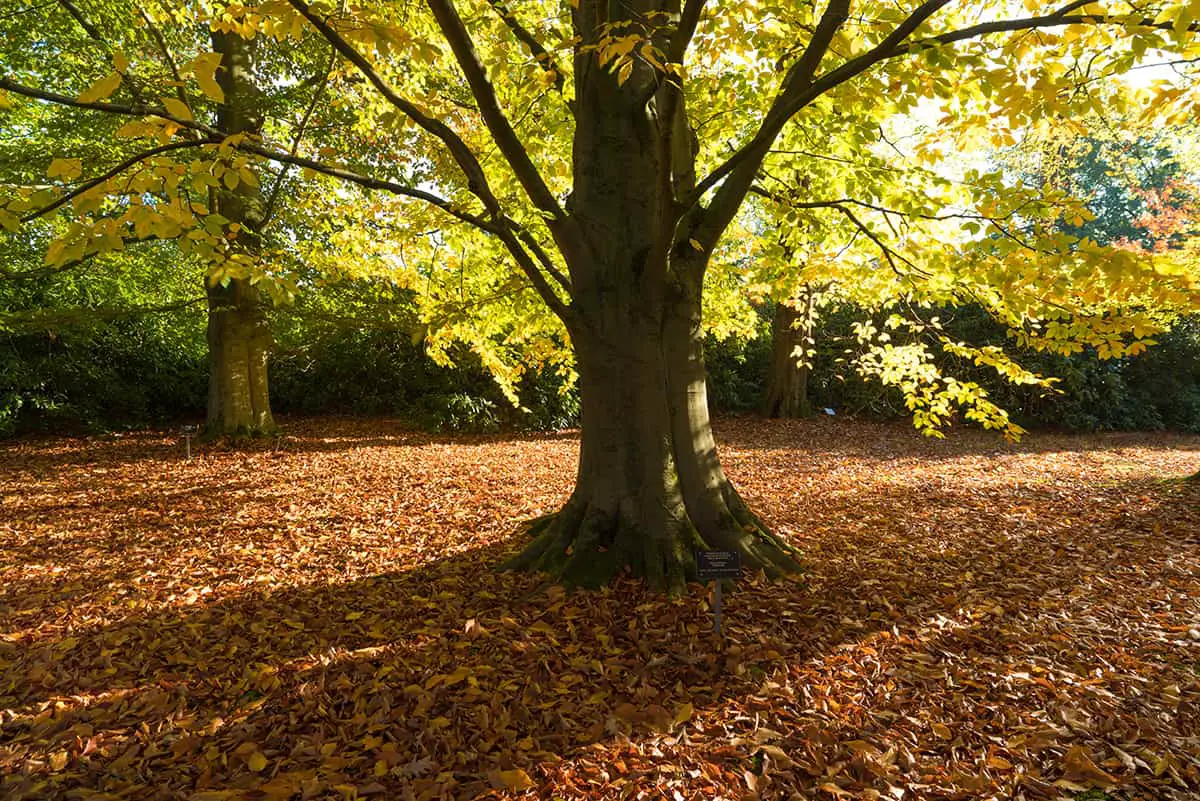
As a native to eastern North America, this tree can grow up to 120 feet in height in forest settings. Not only does it reach impressive dimensions, but it also provides inviting, dense shade.
One unique feature that contributes to the American Beech’s shade-giving abilities is its low-branching habit. The smooth-barked tree naturally develops branches close to the ground, which means there is less need for grass or ground cover beneath it. Having less vegetation below the tree allows it to cast a deeper shade, making it perfect for your landscape.
When considering where to plant your American Beech tree, keep in mind that it thrives in full sun to partial shade, and requires moist, well-drained, slightly acidic soil. Due to its shallow root system and heavy shade, planting grass or other ground covers beneath it can be problematic. Nevertheless, this tree’s magnificent presence can make a strong visual statement in your yard.
Birch (Betula Spp.)
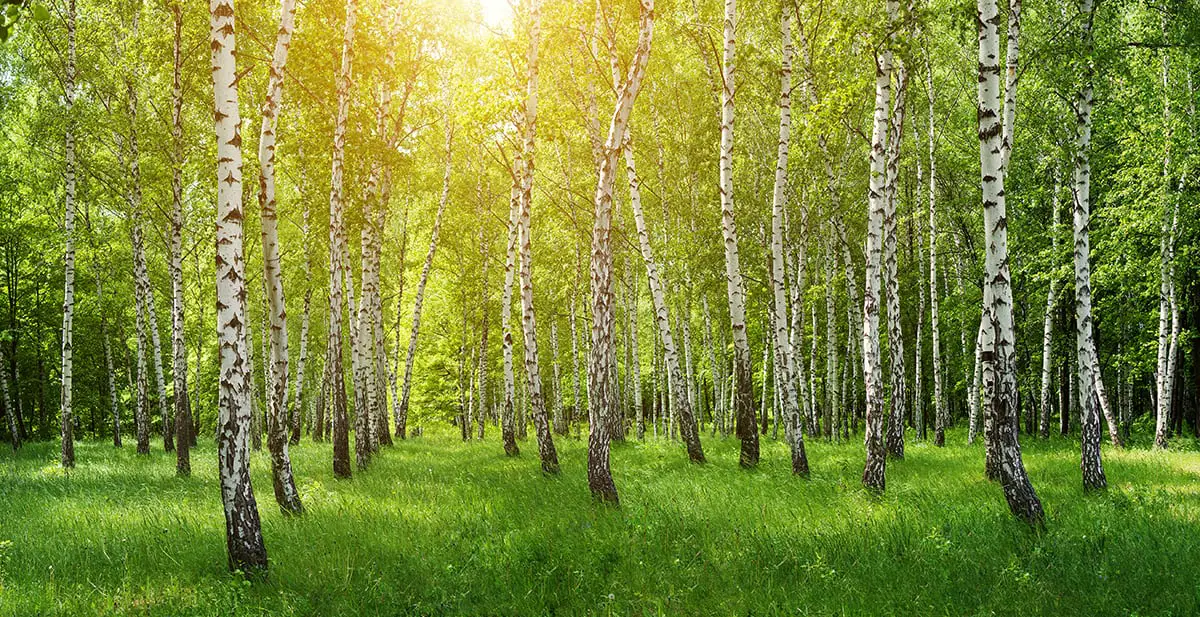
When seeking trees for shade and privacy, consider the Birch tree. This deciduous tree belongs to the genus Betula, with about 60 species available throughout the northern hemisphere. Birch trees often possess visually appealing bark and are suitable for different settings.
Birch trees thrive in moist, acidic, sandy, or rocky loam with a slightly acid pH. They grow optimally in full sun to part shade. However, planting them in full sun results in the best foliage color. For example, River Birch (Betula nigra) shows a strong preference for wet sites and can tolerate occasional waterlogged conditions.
Various species offer different features and benefits for your landscape. For instance, Japanese White Birch (Betula platyphylla) grows 30 to 40 feet tall with a rounded or columnar form, providing a sense of privacy and a pleasant aesthetic.
In contrast, the Gray Birch (Betula populifolia) is a short-lived, narrow-columnar tree that typically grows 20 to 40 feet tall. These trees not only create a visual barrier but also cast soothing shadows to cool down outdoor spaces during hot summer days.
Silver Maple (Acer Saccharinum)
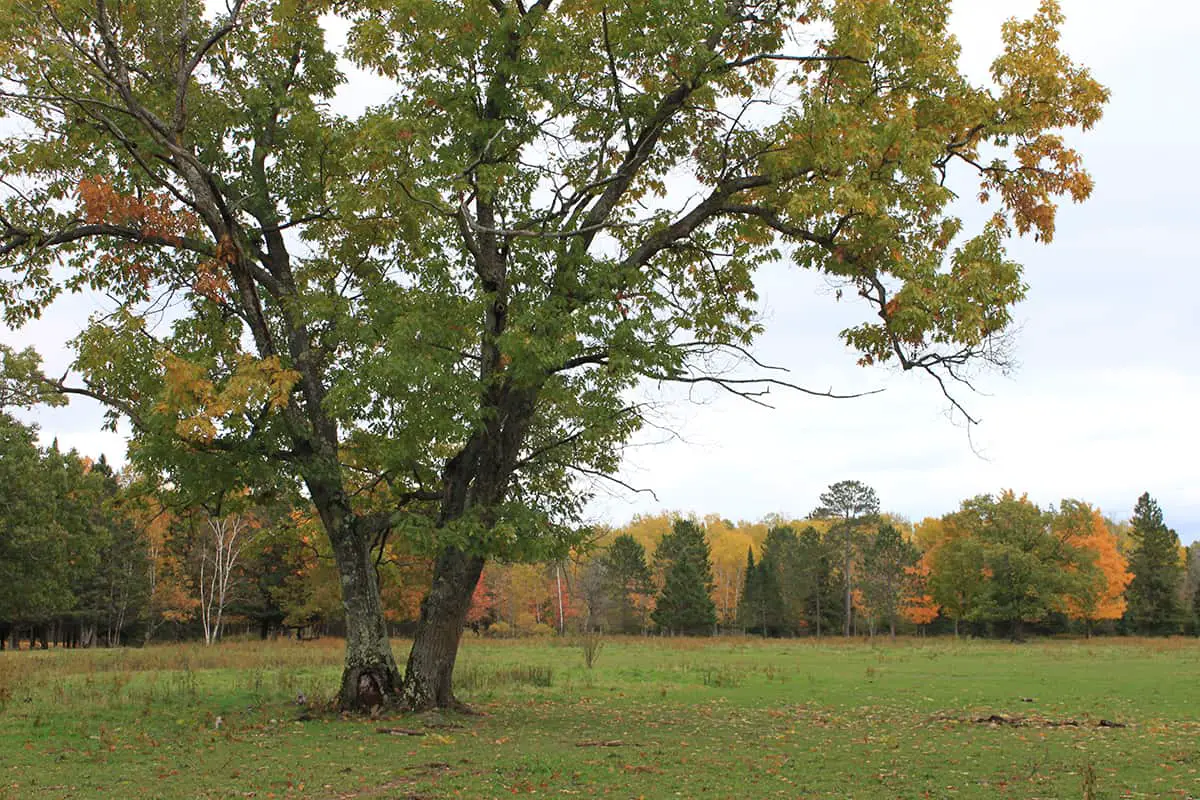
This fast-growing tree will rapidly provide shade due to its excellent growth rate. Its large swooping branches form an upright, rounded crown, perfect for creating a natural privacy screen.
Before planting a silver maple, consider the tree’s unique characteristics. It thrives in full sun to light shade and prefers slightly moist, slightly acidic soils. The tree has a high tolerance for poorly drained soils and can withstand both drought and wet conditions.
However, silver maples do have a few downsides. Their branch structure is weak and susceptible to storm damage. Ice and snow can easily break the brittle branches, causing potential hazards or landscape damage.
In terms of pest and disease resistance, silver maples are generally free from serious issues. But they may still experience challenges such as scale, borers, Verticillium wilt, anthracnose, and canker when stressed.
Oak (Quercus Spp.)
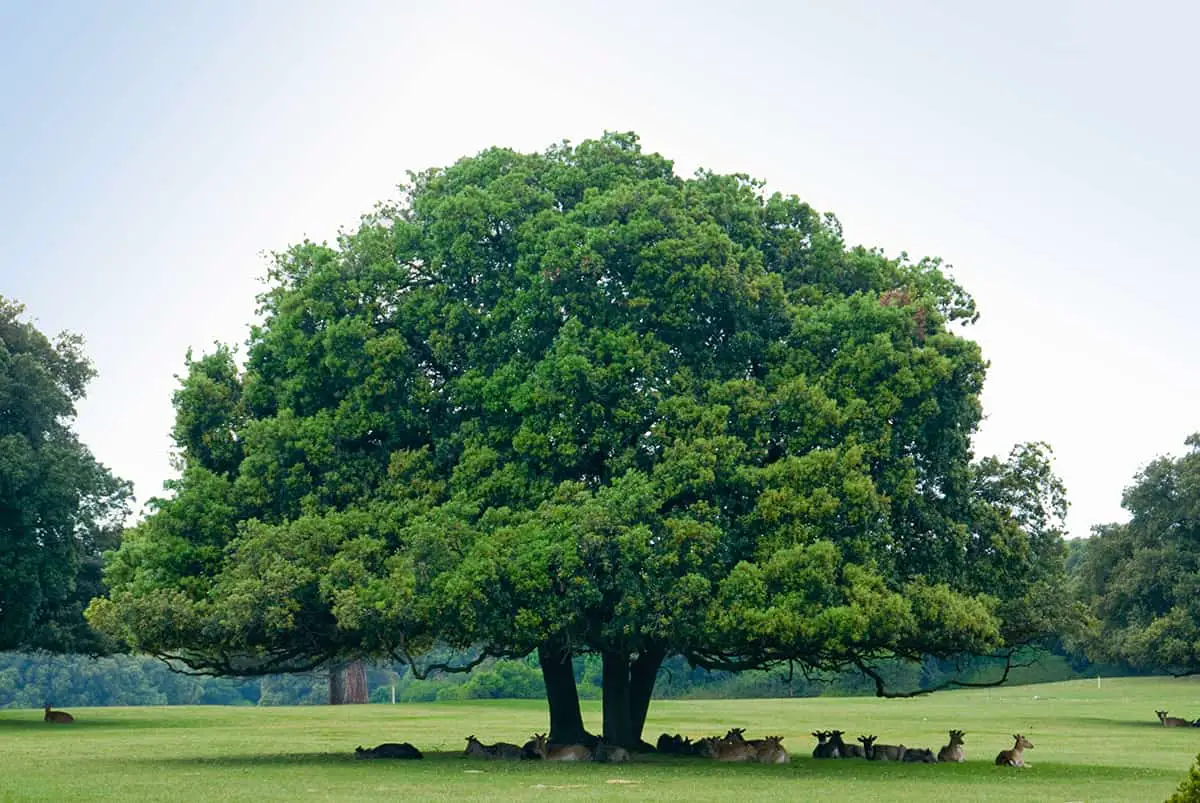
Oak trees are highly valued for their shade and privacy attributes. They’re tough and drought-tolerant, and there are about 450 known species of oak, making it easier for you to find the right variety for your landscape.
To begin, consider the size, shape, and climate requirements of the desired oak species. You can choose from small, shrub-like varieties such as the Gambel oak (Quercus gambelii) or larger, stately shade trees like the English oak (Quercus robur). Remember to select a species suitable for your local environment.
Keep in mind that oak trees are long-lasting additions to your yard. Many can enhance the landscape for over 100 years. While selecting the perfect oak for you, also consider its ability to withstand prevalent diseases, such as chestnut blight (Quercus lyrata is mildly resistant to deer browsing).
Cherry Laurel (Prunus Laurocerasus)
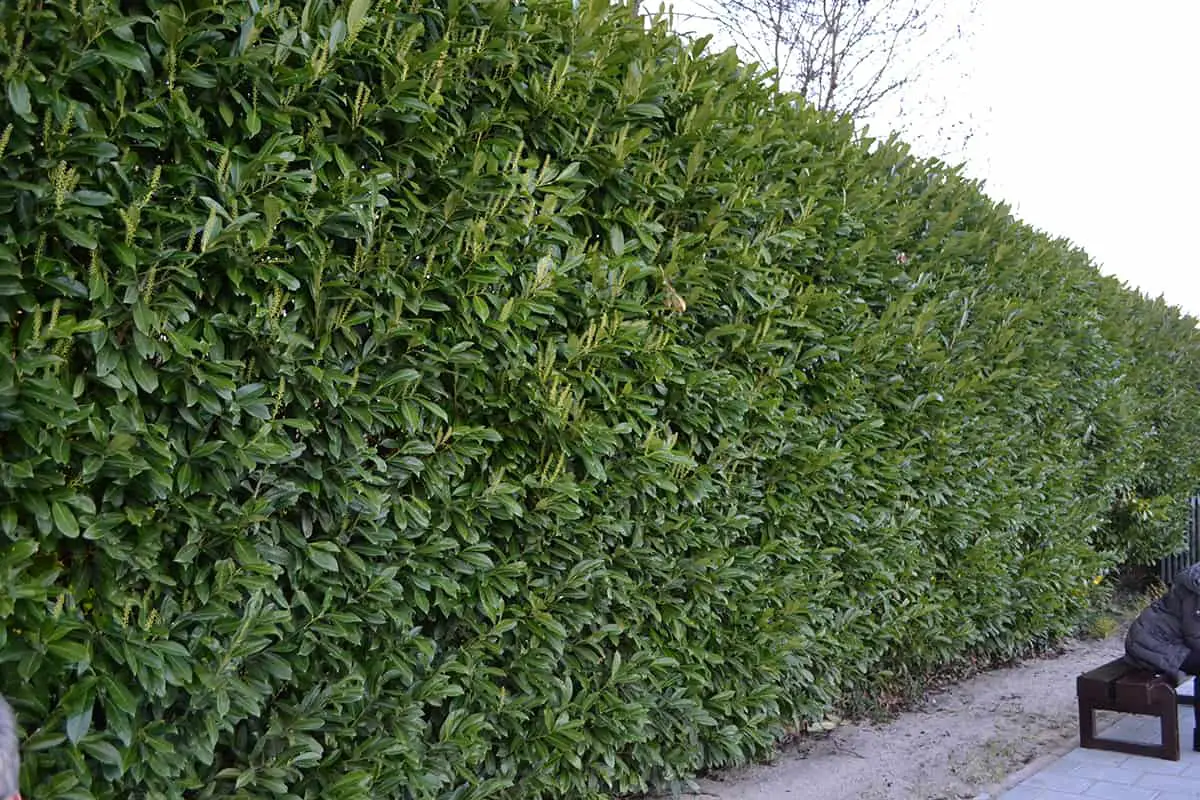
This tree, native to Europe, can grow up to 20 feet tall and 10 feet wide. With its glossy green leaves and beautiful white flowers, it is an attractive option to consider. Cherry Laurel can tolerate a range of conditions, including salt spray and shade.
When planting Cherry Laurel, be sure to choose a location with moist, well-drained, acidic soil. You should supplement the soil with organic matter to promote healthy growth. This tree can thrive in both sunlight and shade; however, optimal growth occurs in full sun to partial shade. Cherry Laurel will reward you with fragrant white flowers in spring and black fruits in summer, adding visual interest to your garden.
Keep in mind that Cherry Laurel has high severity poison characteristics, so you should plant it with caution if you have children or pets. Also, monitor the tree for pests, like leaf yellowing or branch dieback, which are often caused by the lesser peachtree borer.
Japanese Maple (Acer Palmatum)
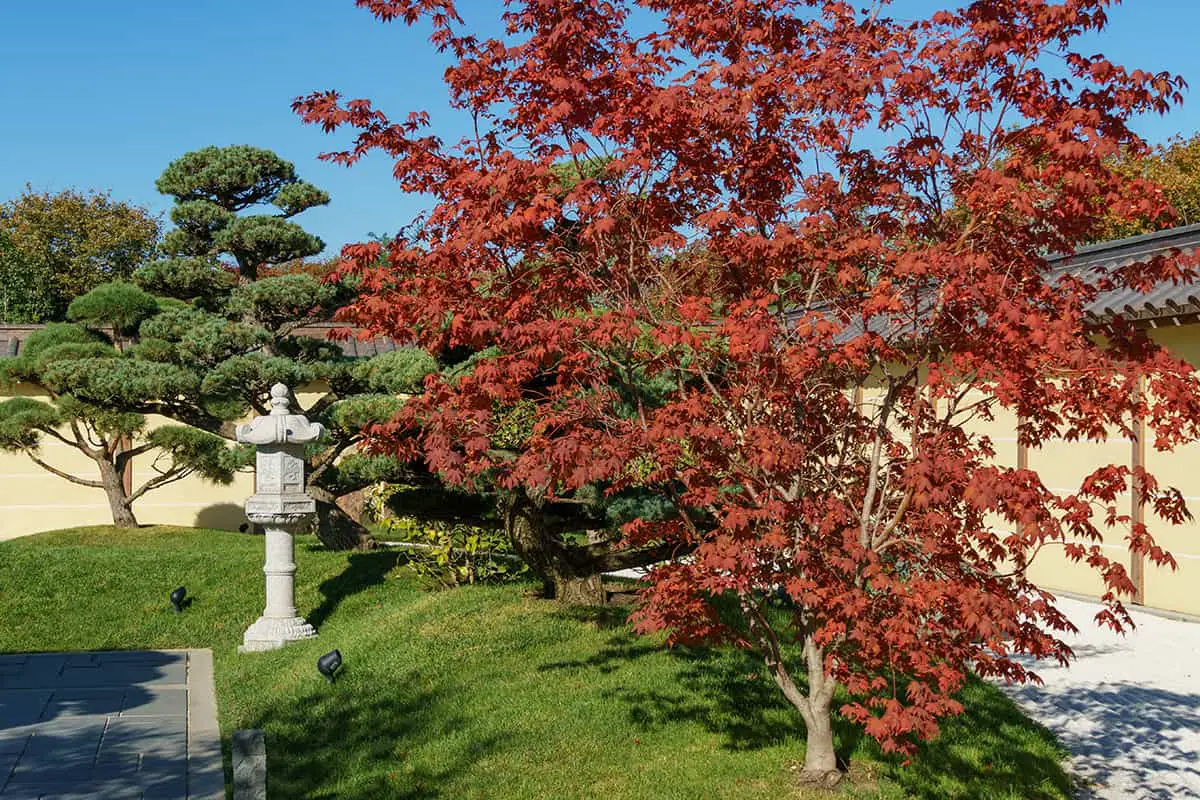
The Japanese Maple (Acer Palmatum) is an elegant tree that offers both shade and privacy to your garden. These beautiful trees are known for their unique leaves, which are shaped like a hand. They are slow to moderate growers, reaching heights between six to 25 feet tall, perfect for various landscapes.
You can plant a Japanese Maple in full sun or partial shade, depending on the specific variety. These trees perform best in moist, well-drained soil, and they can tolerate different soil types, including sand and heavy clay. The foliage often changes color throughout the year, providing a stunning display during fall with bright yellows, oranges, and reds.
To achieve the desired level of privacy and shade in your garden, consider planting your Japanese Maple in a strategic location. When positioning the tree, keep in mind that it should be planted in dappled shade for optimal growth, while being protected from drying winds.
Once your Japanese Maple is established, it requires minimal maintenance. Pruning in late winter or early spring helps maintain its attractive shape and remove any dead or diseased branches. Regular watering ensures healthy growth, although you should avoid overwatering, as this can lead to root rot.
